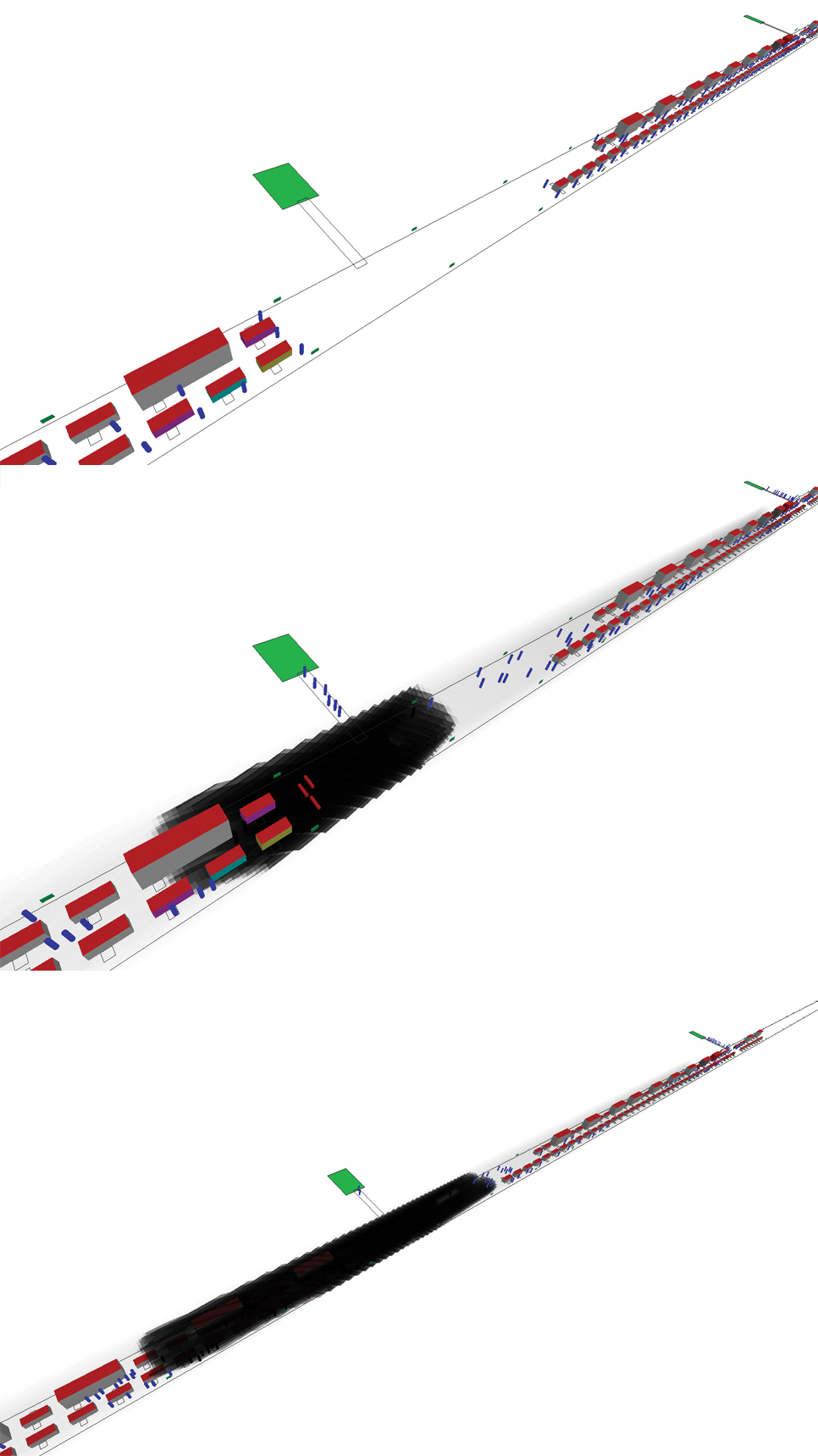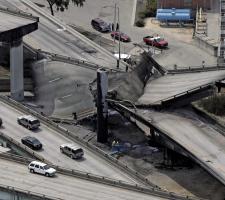
Consequences of events have been identified using an evacuation model based on PTV’s Vissim modelling
The European Commission’s SeRoN research project has drawn to a close, having developed a sophisticated method of identifying and quantifying threats to critical infrastructure.
In December 2008 theIn SeRoN an international consortium consisting of seven project partners, among them
Key elements
The European road network is of critical importance for the European economy and equally for the mobility of European citizens. Therefore, a main task of owners and operators of highways and roads in Europe is to ensure a high degree of availability of all important links. Even smaller traffic disruptions due to restriction or failure of some elements of the road network may lead to intense traffic disruption, resulting in high economic costs and negative environmental impacts. Bridges and tunnels in particular, are key elements of the road network. Due to their bottleneck function the failure of such infrastructure assets could lead to regional and international impacts on the European road network. Therefore, within the SeRoN project a comprehensive four-step approach has been developed which allows assessing road infrastructure objects like bridges and tunnels with regard to security aspects. With this new method road infrastructure owners and operators can analyse large road networks and assess individual infrastructure objects as well as determine the effectiveness of protection measures. Such an assessment is an interdisciplinary task of civil and transportation engineering, economics, mathematics, physics and statistics etc. In the course of the project two international workshops were organised in order to take into account the experience of European road owners and operators concerning the security assessment of road infrastructure assets.
The entire procedure developed within the project is characterised by a very high degree of transparency and modularity. However, the level of detail and the complexity of the relevant analyses are growing step by step within the methodology. With the higher level of detail, the need of expert knowledge and more sophisticated simulation models increases. But due to its modular structure other models than the ones taken can be used.
Most relevant threats
To start, a comprehensive analysis of threats for road transport infrastructure objects has been undertaken. With an initial relevance assessment, the relevance of various combinations of threats and asset types was determined: it was found that fire and explosives are the most relevant threats for the infrastructure assets considered in SeRoN.Then all infrastructure assets in a selected road network were roughly filtered and ranked according to criticality. This can easily be done based on data such as average daily traffic, share of HGVs etc; data which is generally available from road infrastructure owners and operators. An overview of suitable protection measures including their detailed description has equally been compiled. Protection measures hereby have been distinguished between preventive, mitigating and reconstructive on the one hand, and structural, organisational and operational on the other.
Calculating benefits
To determine the importance of an infrastructure asset for a certain road network and the impacts in case of its loss, a comprehensive and feasible assessment procedure has been developed. It allows calculation of socio-economic benefits arising from the prevention of asset failure due to protection measures and is based on the comparison between two scenarios: scenario A involves complete failure due to an unspecified incident and non-availability for any kind of user, whereas scenario B is the “normal” situation when no incident has occurred. Benefit calculation hereby takes into account the consequences for road users, the infrastructure itself, traffic flow and regional economy which may arise from its non-availability.To examine improvements of the security level for individual assets due to suitable protection measures, the quantitative risk analysis (QRA) method has been applied. Based on defined scenarios, the occurrence probability and consequences of certain events and thus the corresponding risk have been modelled in a bow-tie analysis using fault trees (before event) and event trees (after event).
Numerical modelling
Hereby, highly sophisticated numerical models are used, such as computational fluid dynamics models to solve and analyse problems that involve fires. Short-time dynamics or blast models determine the consequences of explosives. Finite element modelling is used to carry out structural analysis for calculating the effects and to quantify the consequences on infrastructure objects and road users in case of an event.Consequences on road users have been identified using an evacuation model based on PTV’s Vissim modelling. This allows description of pedestrian movements depending on external influences, taking into account perception and behaviour. Consequences of an event on the transport network are determined using VALIDATE, PTV’s own traffic and transport model. In order to be able to sum up the different types of consequences examined, the risks have to be monetized.
Finally the cost-effectiveness of protection measures has been determined based on the difference between risk with and without a protection measure, as well as the costs of the respective measure.
With its approach the SeRoN methodology provides support for road infrastructure owners and operators in developing short-term and long-term strategies to improve the security of road transport infrastructures and offers guidance for future investments into protection measures and risk mitigation strategies.
Further need for research may arise when adapting the developed procedure to a broader range of applications. This means, for example, including threats like climate change and extreme weather hazards or extending the SeRoN approach to intermodal aspects, including rail, air and waterways.
For more information on the SeRoN approach and its results, please visit the project website:













